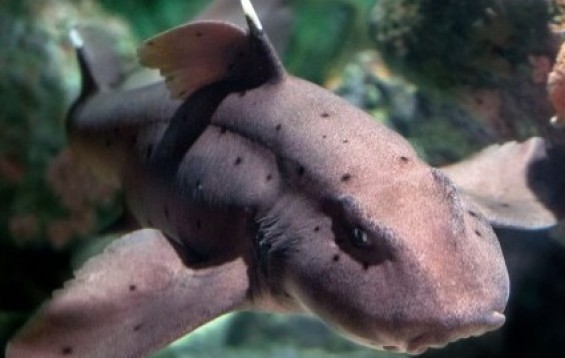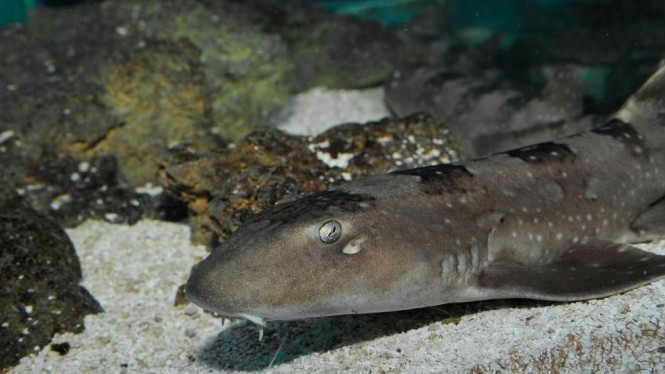- Name:
Horn Shark
(View AKA's) - Family: Heterodontidae
- Species: Shark
- Scientific Name: Heterodontus francisci


-
Difficult
Care Level
-
Aggressive
Temperament
-
Omnivore
Diet
-
0%
Reef Safe
- 79
Temp (Temperature)
- 7.9
pH (pH)
- 0
NH3-4 (Ammonia)
- 0
NO3 (Nitrate)
- 0
PO4 (Phosphate)
- 9
AT (Alkalinity)
- 440
Ca (Calcium)
- 1320
Mg (Magnesium)
- 1.025
SG (Salinity)
- NAN
ORP (Oxidation Reduction Potential)
- 0
Avg. Size (Inches)
- 29
Avg.Tank Size (Gallons)
- 4
Avg Life (Years)

Venomous
General info about Horn Shark
This shark is also known as within the aquarium trade as the Bullhead Shark, while the Horn Shark is smaller than many other shark species, it should be kept only by expert aquarists with very large aquariums. Horn Sharks are generally tan in color with some blotchy darker tan or brown areas and they may have a series of small black spots marking the body and are considered relatively small size (4 feet max) and slower swimming speeds. To properly house the Horn Shark, the aquarium should be very large (300 gallons +) and should have a sand substrate bottom and some rock work to provide hiding places. A sand substrate is crucial as the Horn Shark will lay on the bottom of the tank often and crushed coral or aragonite substrates will cause scratches and irritation on the Horn Sharks abdomen.
Horn Shark Diet & Nutrition
Adult Horn sharks will prey mainly on hard-shelled molluscs, echinoderms, and crustaceans, which they crush between powerful jaws and molar-like teeth, while also feeding opportunistically on a wide variety of other invertebrates and small bony fishes. Juveniles prefer softer-bodied prey such as polychaete worms and sea anemones.
Acclimating Horn Shark
When first introduced into the aquarium, small pieces of cleaned squid or live saltwater feeder shrimp should be used to entice this fish to eat.
Horn Shark are Venomous
The Horn Shark has a spine at the front of the dorsal fin that it uses to protect itself from being swallowed by larger fish, but which can cause injury to people if not handled carefully.
Original Detail
| Name | Species | Family | Scientific Name | More Detail | Added by |
|---|---|---|---|---|---|
| Horn Shark | Shark | Heterodontidae | Heterodontus francisci | This shark is also known as within the aquarium trade as the Bullhead Shark, while the Horn Shark is smaller than many other shark species, it should be kept only by expert aquarists with very large aquariums. Horn Sharks are generally tan in color with some blotchy darker tan or brown areas and they may have a series of small black spots marking the body and are considered relatively small size (4 feet max) and slower swimming speeds. To properly house the Horn Shark, the aquarium should be very large (300 gallons +) and should have a sand substrate bottom and some rock work to provide hiding places. A sand substrate is crucial as the Horn Shark will lay on the bottom of the tank often and crushed coral or aragonite substrates will cause scratches and irritation on the Horn Sharks abdomen. |
PalaciosAn |
Changed by users
| Submitted Date | Submitted By | Status | Action |
|---|


